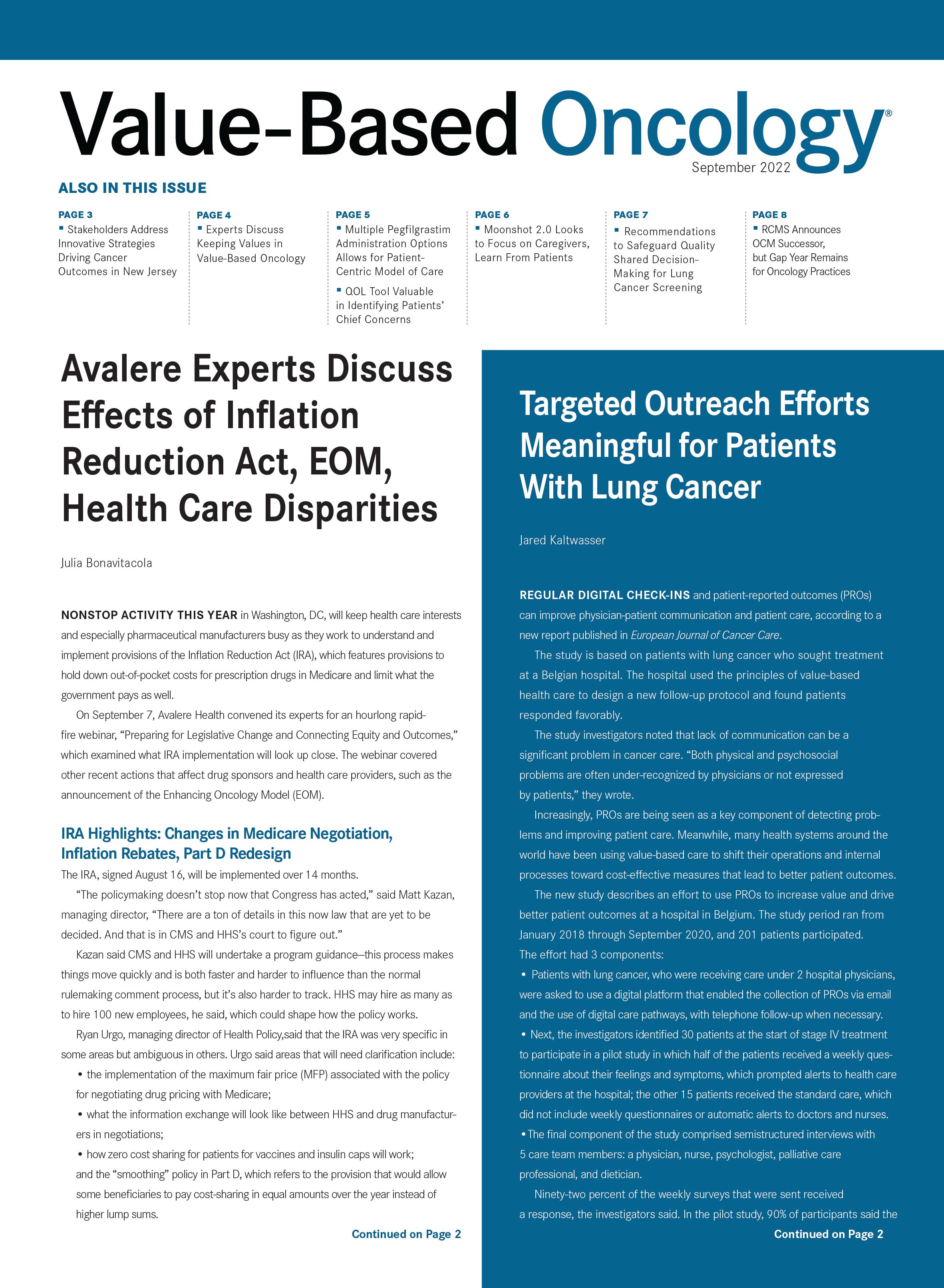- Center on Health Equity & Access
- Clinical
- Health Care Cost
- Health Care Delivery
- Insurance
- Policy
- Technology
- Value-Based Care
Targeted Outreach Efforts Meaningful for Patients With Lung Cancer
Patients were more likely to accept intervention from a psychologist if they received regular questionnaires.
Regular digital check-ins and patient-reported outcomes (PROs) can improve physician-patient communication and patient care, according to a new report published in European Journal of Cancer Care.
The study is based on patients with lung cancer who sought treatment at a Belgian hospital. The hospital used the principles of value-based health care to design a new follow-up protocol and found patients responded favorably.
The study investigators noted that lack of communication can be a significant problem in cancer care. “Both physical and psychosocial problems are often under-recognized by physicians or not expressed by patients,” they wrote.
Increasingly, PROs are being seen as a key component of detecting problems and improving patient care. Meanwhile, many health systems around the world have been using value-based care to shift their operations and internal processes toward cost-effective measures that lead to better patient outcomes.
The new study describes an effort to use PROs to increase value and drive better patient outcomes at a hospital in Belgium. The study period ran from January 2018 through September 2020, and 201 patients participated. The effort had 3 components:
- Patients withlung cancer, who were receiving care under 2 hospital physicians, were asked to use a digital platform that enabled the collection of PROs via email and the use of digital care pathways, with telephone follow-up when necessary.
- Next, the investigators identified 30 patients at the start of stage IV treatment to participate in a pilot study in which half of the patients received a weekly questionnaire about their feelings and symptoms, which prompted alerts to health care providers at the hospital; the other 15 patients received the standard care, which did not include weekly questionnaires or automatic alerts to doctors and nurses.
- The final component of the study comprised semistructured interviews with 5 care team members: a physician, nurse, psychologist, palliative care professional, and dietician.
Ninety-two percent of the weekly surveys that were sent received a response, the investigators said. In the pilot study, 90% of participants said the surveys were easy to use and all found the questions either relevant or moderately relevant. Most were able to complete the surveys without help, they added.
The authors said the psychologist and palliative care worker found the questionnaires particularly helpful. Seven of the 15 patients in the pilot study’s intervention cohort had contact with the psychologist and 4 had multiple conversations with the psychologist. In the standard-care cohort, only 2 patients had contact with the psychologist.
The investigators said the care team members did not track the time it took to administer and monitor the weekly questionnaires, and so it is not possible to know how the program affected the amount of time needed to care for patients. However, they noted that the program did not require an expansion of staff.
The authors concluded that the use of a digital tool to regularly solicit PROs was feasible and had a meaningful impact on patient care.
They noted that their study is limited by its single-center status and the small number of patients and that they did not investigate the clinical implications of questionnaire responses, they said.
Still, their experience shows a digital platform can be user friendly and successfully implemented across a multidisciplinary team.
“As a result, the response rates are high and the weekly follow-up had a positive impact on the patient-provider communication and makes it easier to discuss psychological and palliative care needs,” they concluded.
Reference
Misplon S, Marneffe W, Himpe U, Hellings J, Demedts I. Evaluation of the implementation of value-based healthcare with a weekly digital follow-up of lung cancer patients in clinical practice. Eur J Cancer Care (Engl). Published online July 12, 2022. doi:10.1111/ecc.13653

